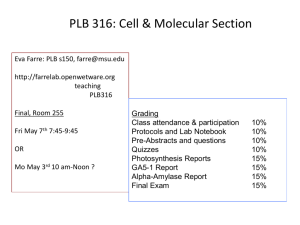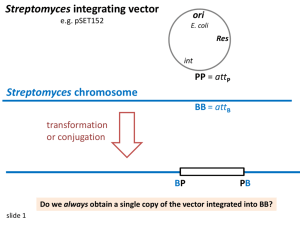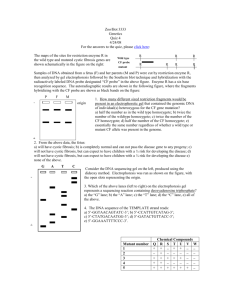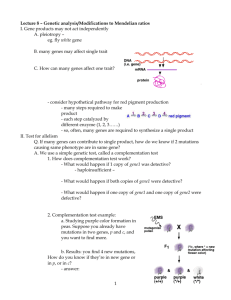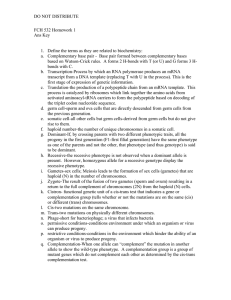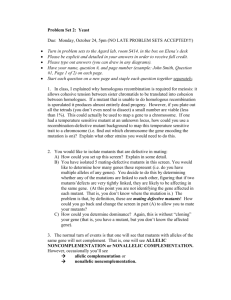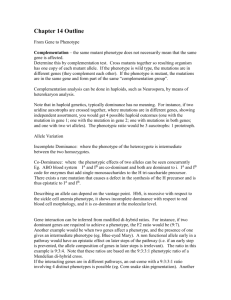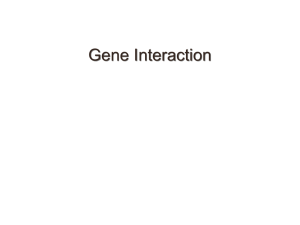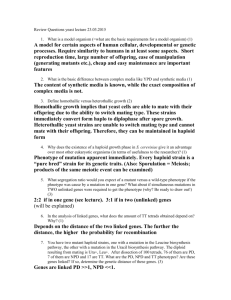MITOCW | MIT7_01SCF11_Un3Ses4_Rec2_300k.mp4
advertisement
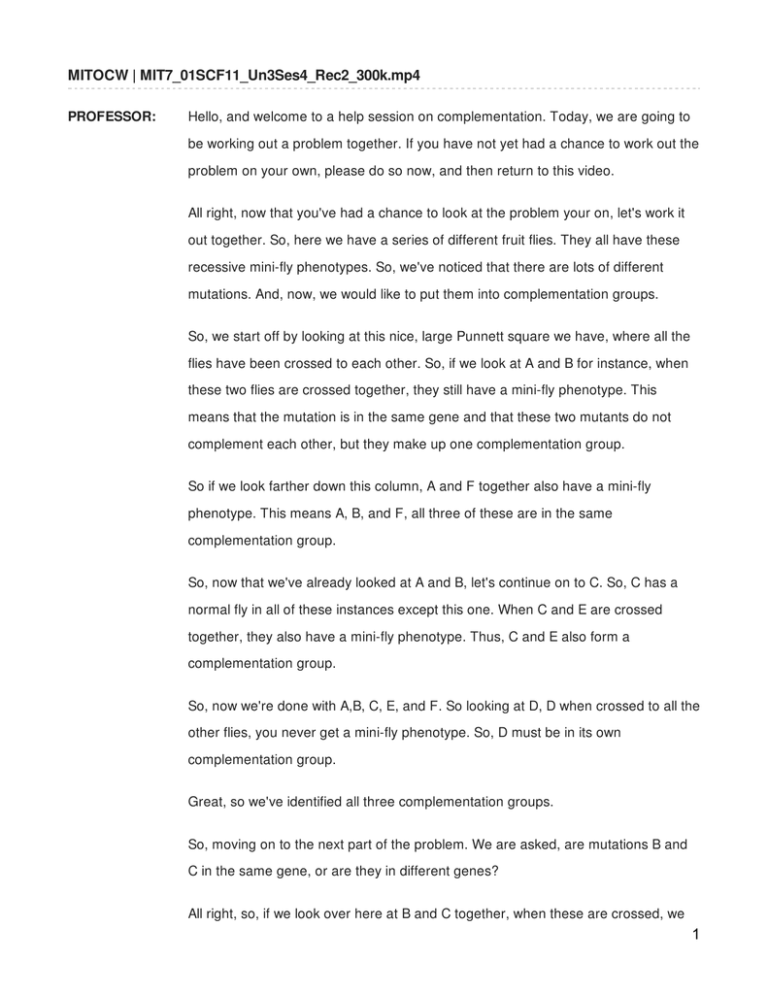
MITOCW | MIT7_01SCF11_Un3Ses4_Rec2_300k.mp4 PROFESSOR: Hello, and welcome to a help session on complementation. Today, we are going to be working out a problem together. If you have not yet had a chance to work out the problem on your own, please do so now, and then return to this video. All right, now that you've had a chance to look at the problem your on, let's work it out together. So, here we have a series of different fruit flies. They all have these recessive mini-fly phenotypes. So, we've noticed that there are lots of different mutations. And, now, we would like to put them into complementation groups. So, we start off by looking at this nice, large Punnett square we have, where all the flies have been crossed to each other. So, if we look at A and B for instance, when these two flies are crossed together, they still have a mini-fly phenotype. This means that the mutation is in the same gene and that these two mutants do not complement each other, but they make up one complementation group. So if we look farther down this column, A and F together also have a mini-fly phenotype. This means A, B, and F, all three of these are in the same complementation group. So, now that we've already looked at A and B, let's continue on to C. So, C has a normal fly in all of these instances except this one. When C and E are crossed together, they also have a mini-fly phenotype. Thus, C and E also form a complementation group. So, now we're done with A,B, C, E, and F. So looking at D, D when crossed to all the other flies, you never get a mini-fly phenotype. So, D must be in its own complementation group. Great, so we've identified all three complementation groups. So, moving on to the next part of the problem. We are asked, are mutations B and C in the same gene, or are they in different genes? All right, so, if we look over here at B and C together, when these are crossed, we 1 get a normal fly. This means that the mutations were able to complement each other. Meaning that the two mutations occur in different genes, and, thus, when you cross the flies, they're able to compensate for each other. So, they're in different genes. All right, now, in the last part of the problem, we're told that we are introduced to a new fly, or a new mutant fly, G. When G is crossed to A, we get a mini-fly phenotype out. Also, when we cross G to B, we also get a mini-fly phenotype. So the question is, what does this suggest to us about mutant G? Looking over here, we notice that A and B are in the same complementation group. When A and B are crossed together, we also get mini-flies So, this suggests to us that G is yet another member of this complementation group. Thus, G also falls into complementation group number one. This concludes our help problem on complementation. Thank you for joining us. 2
